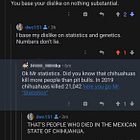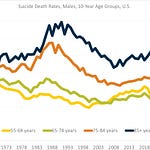In this episode, I look at the most recent revelations re: Francesca Gino’s academia malfeasance, but other tales of academic malpractice. Such as: filling in missing values in datasets with Excel’s autofill functionality, and not sharing data in chemistry/material science or cancer research in what may be fraudulent research. How can we depend on the data and results from what is supposedly hard science research?
Episode Links
Francesca Gino
Science, 9 Apr 2024: Embattled Harvard honesty professor accused of plagiarism by Cathleen O’Grady
Harvard University honesty researcher Francesca Gino, whose work has come under fire for suspected data falsification, may also have plagiarized passages in some of her high-profile publications.
A book chapter co-authored by Gino, who was found by a 2023 Harvard Business School (HBS) investigation to have committed research misconduct, contains numerous passages of text with striking similarities to 10 earlier sources. The sources include published papers and student theses, according to an analysis shared with Science by University of Montreal psychologist Erinn Acland.
Science has confirmed Acland’s findings and identified at least 15 additional passages of borrowed text in Gino’s two books, Rebel Talent: Why it Pays to Break the Rules at Work and in Life and Sidetracked: Why Our Decisions Get Derailed, and How We Can Stick to the Plan. Some passages duplicate text from news reports or blogs. Others contain phrasing identical to passages from academic literature. The extent of duplication varies between passages, but all contain multiple identical phrases, as well as clear paraphrases and significant structural similarity.
…
Debora Weber-Wulff, a plagiarism expert at the Berlin University of Applied Sciences, says Science’s findings are “quite serious” and warrant further investigation by the publishers and universities. HBS and Harvard Business Review Press, which published Sidetracked, declined to comment. Dey Street Books, a HarperCollins imprint that published Rebel Talent, and Guilford Press, publisher of the edited book The Social Psychology of Good and Evil that includes the co-authored chapter, did not respond to a request for comment.Acland says she decided to “poke around” into Gino’s work in September 2023, after the researcher filed a $25 million lawsuit against HBS and the data sleuths who uncovered the misconduct. Acland focused on plagiarism, rather than data issues, because of her experience detecting it in student work. She searched phrases from Gino’s work on Google Scholar to see whether they matched content from other works.
She says she found apparent plagiarism in the very first sentence of the first work she assessed, the 2016 chapter “Dishonesty explained: What leads moral people to act immorally.” The sentence—“The accounting scandals and the collapse of billion-dollar companies at the beginning of the 21st century have forever changed the business landscape”—is word for word the same as a passage in a 2010 paper by the University of Washington management researcher Elizabeth Umphress and colleagues.
I didn’t talk about the person who found the plagiarism in this case.
This is what gets me so often — the tenured profs just assume nobody will ever check.
For various reasons, perhaps all the top profs shouldn’t assume that anymore. And maybe they should start crediting all their research assistants with the real work…. but that’s for another time.
Prior Gino posts/episodes:
Material Science/Chemistry Non-Replicable Experiment
Chemistry World, 11 April 2024: Holes in the ‘holey graphyne’ story
Recently, the journal Matter published a paper describing a novel form of carbon.2 This purported allotrope, ‘holey graphyne’, is comprised mainly of cyclooctadiyne rings. Moreover, the synthesis was supposedly accomplished using a simple copper catalyst. Typically, the C–C bond-forming reactions of the kind claimed in the Matter paper require expensive palladium.
The unusual structure and the unprecedented chemistry should have raised eyebrows during peer review, and ideally before this review commenced. Eight-membered rings with even a single triple bond are highly reactive (harnessing that reactivity has brought a Nobel prize to Carolyn Bertozzi). A material containing that many two-triple-bond rings would be more energetic than TNT, and likely quite prone to rapid unscheduled disassembly. Contrary to these expectations, the paper asserted perfect stability of the ‘holey’ material up to 700°C. While the reported spectroscopy was demonstrably mismatched with the claimed structure, the authors simply declared that everything fits.
….
Our replication is now published.4 We are grateful to the editor of Matter, as I know from experience that not every editor would even acknowledge the problem.
Regrettably, this story doesn’t qualify as a decisive win for post-publication review. Following their policy, Matter allowed the authors to publish a response, which doubled down on the original dubious conclusions. For now, the ‘holey’ paper remains unretracted, though I remain hopeful.
You may have come across equally troubling papers in your field. Don’t remain silent. Share your concerns on platforms like PubPeer or social media, reach out to journal editors and inform research compliance offices. This may end up being some of your most important work.
Matter, 6 March 2024: The purported synthesis of “holey graphyne” fails replication
A recent article by Ryu, Lee, and co-workers claims synthesis of “holey graphyne,” a strained sp2/sp1 carbon lattice featuring a repeating dibenzo-1,5-cyclooctadiene-3,7-diyne motif. Here, we describe the replication of the key experiments from this article. We did not observe the formation of holey graphyne under the reported conditions. Furthermore, we show that the claimed copper-mediated sp2/sp1 cross-coupling chemistry fails even for undemanding model substrates.
The Saga of the Iffy Excel Autofill & “Just Copy the Next Country” Imputation
Retraction Watch, 5 Feb 2024: No data? No problem! Undisclosed tinkering in Excel behind economics paper
Last year, a new study on green innovations and patents in 27 countries left one reader slack-jawed. The findings were no surprise. What was baffling was how the authors, two professors of economics in Europe, had pulled off the research in the first place.
The reader, a PhD student in economics, was working with the same data described in the paper. He knew they were riddled with holes – sometimes big ones: For several countries, observations for some of the variables the study tracked were completely absent. The authors made no mention of how they dealt with this problem. On the contrary, they wrote they had “balanced panel data,” which in economic parlance means a dataset with no gaps.
“I was dumbstruck for a week,” said the student, who requested anonymity for fear of harming his career. (His identity is known to Retraction Watch.)
22 Feb 2024: Exclusive: Elsevier to retract paper by economist who failed to disclose data tinkering
A paper on green innovation that drew sharp rebuke for using questionable and undisclosed methods to replace missing data will be retracted, its publisher told Retraction Watch.
Previous work by one of the authors, a professor of economics in Sweden, is also facing scrutiny, according to another publisher.
As we reported earlier this month, Almas Heshmati of Jönköping University mended a dataset full of gaps by liberally applying Excel’s autofill function and copying data between countries – operations other experts described as “horrendous” and “beyond concern.”
21 Feb 2024, by Gary Smith: How (not) to deal with missing data: An economist’s take on a controversial study
For example, a student in my introductory statistics class once surveyed 54 classmates and was disappointed that the P-value was 0.114. This student’s creative solution was to multiply the original data by three by assuming each survey response had been given by three people instead of one: “I assumed I originally picked a perfect random sample, and that if I were to poll 3 times as many people, my data would be greater in magnitude, but still distributed in the same way.” This ingenious solution reduced the P-value to 0.011, well below Fisher’s magic threshold.
Ingenious, yes. Sensible, no. If this procedure were legitimate, every researcher could multiply their data by whatever number is necessary to get a P-value below 0.05. The only valid way to get more data is, well, to get more data. This student should have surveyed more people instead of fabricating data.
….
Joelving also found that Excel’s autofill function sometimes generated negative values, which were, in theory, impossible for some data. For example, Korea is missing R&Dinv (green R&D investments) data for 1990-1998. Heshmati and Tsionas used Excel’s autofill with three years of data (1999, 2000, and 2001) to create data for the nine missing years. The imputed values for 1990-1996 were negative, so the authors set these equal to the positive 1997 value.
Cancer Research Fraud
The Free Press, February 2024: We’re Not Curing Cancer Here, Guys
These concerns have been brewing for a while and they are reaching a tipping point. The fact that there’s been so much plagiarism at Harvard and there’s been all this image manipulation shows that the most venerable institutions are no safeguard against malfeasance.
What punishment have any of these researchers actually faced? Claudine Gay resigned, although was shuffled into a role that paid her very well. All of the authors of these disputed papers have, to my knowledge, faced no sanction. Their paper gets withdrawn, but they still get promoted. There’s no punishment.
A few years ago, there was a proposal by the International Committee of Medical Journal Editors arguing that every paper published in the top journals should make the raw data available. That proposal was shot down because people were worried about their careers, and that other researchers would take their data and use it to make breakthroughs before them. Sharing is the solution. You should have to make all the data available whenever you publish medical research.
Research Fraud, etc. thread at GoActuary
Contains links to these and other stories



















Share this post